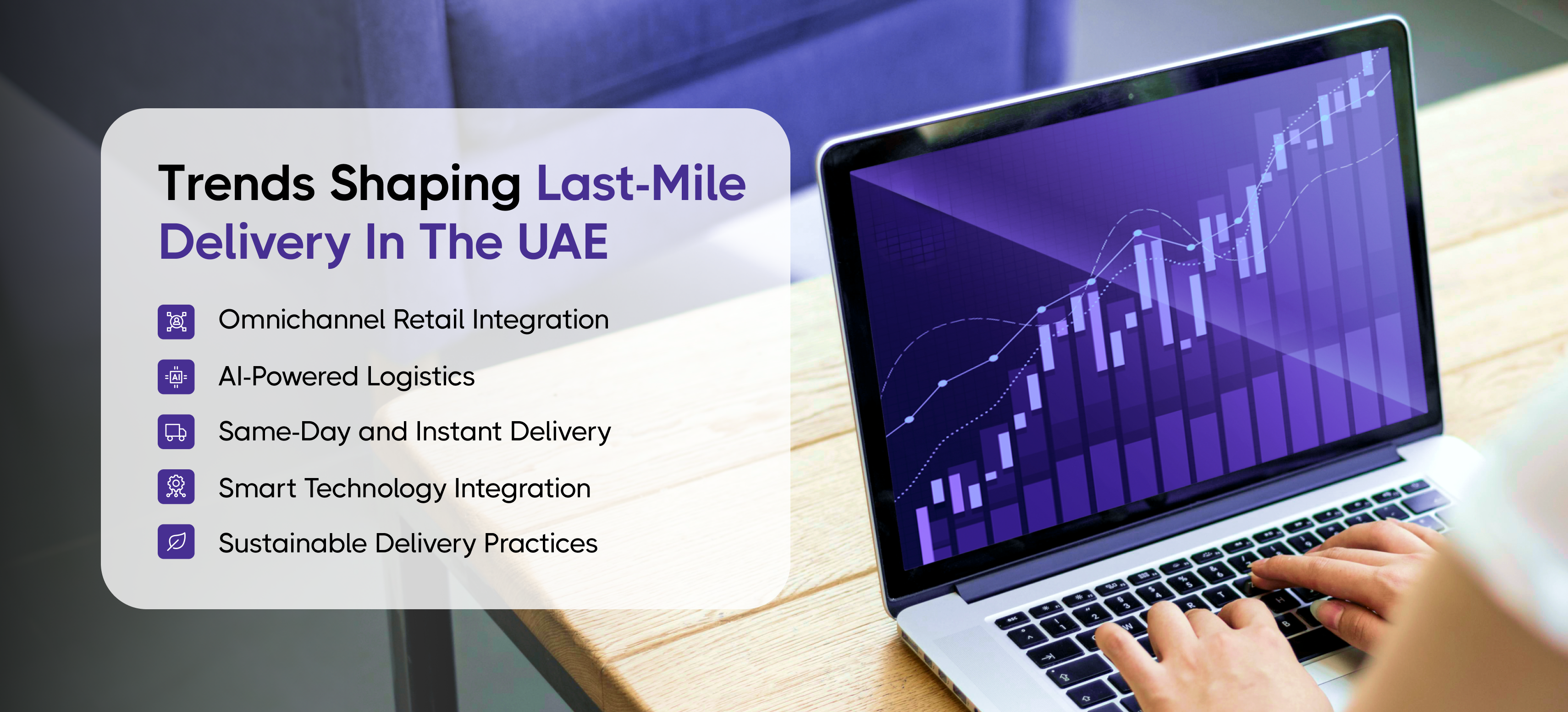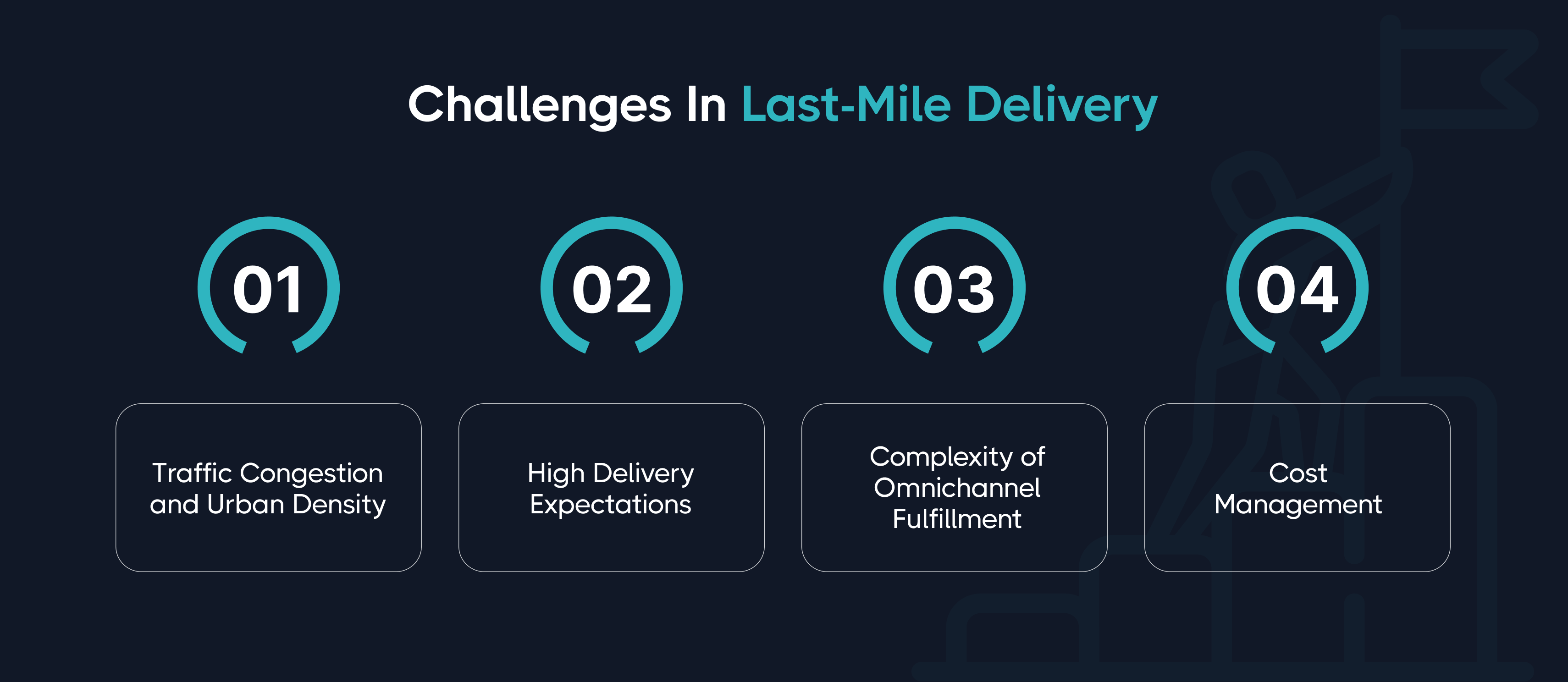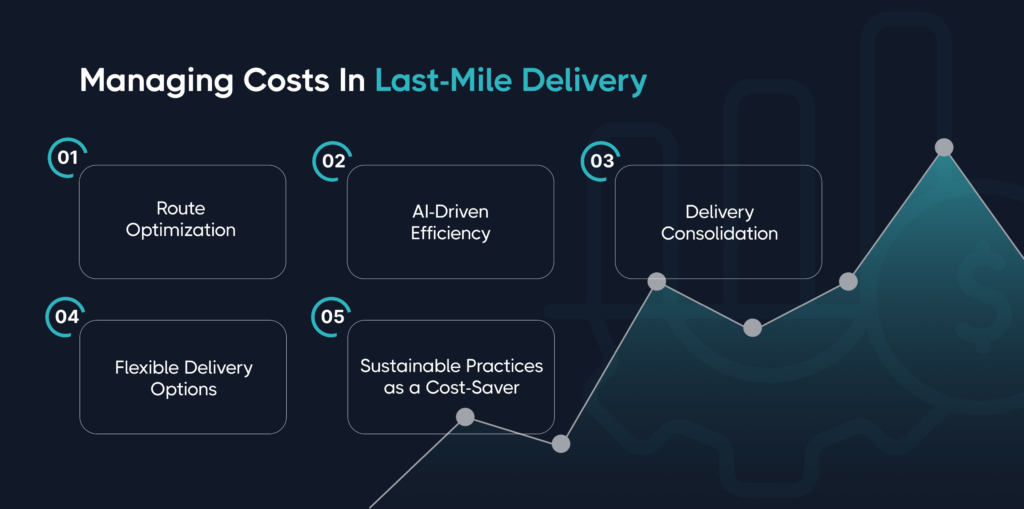In the fast-paced world of eCommerce, the final leg of the delivery journey—commonly known as last-mile delivery—has become the ultimate battleground for customer satisfaction. In the UAE, where consumer expectations are sky-high and competition is fierce, mastering last-mile logistics is not just a necessity; it’s a game-changer. But with the rapid evolution of delivery trends, the unique challenges of the region, and the pressure to control costs, how can your business stay ahead?
Welcome to the front lines of last-mile delivery in the UAE, where instant gratification, smart technology, and sustainable practices collide. Whether you're striving to meet the demands of omnichannel retail or leveraging AI for smarter logistics, understanding the landscape is key to staying competitive. In this blog, we’ll explore the latest trends, tackle the challenges head-on, and uncover the strategies that can help your business not only survive but thrive in this critical arena.
Trends Shaping Last-Mile Delivery in the UAE
The UAE’s dynamic market is at the forefront of several last-mile delivery trends that are transforming the logistics landscape. Staying ahead of these trends can give your business a competitive edge:

- Omnichannel Retail Integration: As consumers increasingly shop across multiple platforms—online, in-store, and via mobile apps—the demand for seamless omnichannel retail experiences is rising. Retailers in the UAE are integrating their online and offline channels to provide a unified shopping experience, which includes flexible delivery options such as in-store pick-up, curbside delivery, and home delivery. This shift requires logistics providers to be more agile and responsive, ensuring that inventory is accurately tracked and available across all channels.
- AI-Powered Logistics: Artificial intelligence is revolutionizing last-mile delivery by enabling smarter, more efficient logistics operations. AI algorithms can predict demand patterns, optimize delivery routes, and even allocate resources based on real-time data. For example, AI can analyze traffic conditions, weather patterns, and order volumes to suggest the best delivery routes and times, minimizing delays and reducing costs. In the UAE, where traffic congestion and urban density pose significant challenges, AI-driven solutions are becoming increasingly important for maintaining efficient last-mile logistics.
- Same-Day and Instant Delivery: The demand for speed in delivery is higher than ever. Consumers in the UAE expect their purchases to arrive within hours, if not minutes. This shift has led to a rise in same-day and instant delivery services, pushing logistics providers to adopt more agile and responsive delivery models.
- Smart Technology Integration: The integration of smart technologies like IoT and GPS tracking is further enhancing last-mile logistics. These tools provide real-time visibility into delivery operations, allowing companies to monitor shipments, predict delivery windows, and communicate more effectively with customers. The result is not only improved efficiency but also a more satisfying delivery experience for customers.
- Sustainable Delivery Practices: With growing awareness of environmental issues, there’s an increasing emphasis on sustainable delivery practices. Companies are exploring eco-friendly delivery options, such as electric vehicles, bike couriers, and consolidated deliveries, to reduce their carbon footprint while maintaining high service levels.
Challenges in Last-Mile Delivery
While these trends offer exciting opportunities, they also come with their share of challenges. Understanding and addressing these challenges is key to ensuring that your last-mile logistics operations run smoothly:

- Traffic Congestion and Urban Density: The UAE’s major cities, particularly Dubai and Abu Dhabi, are known for their high population density and traffic congestion. Navigating these urban environments efficiently is a major challenge for last-mile delivery, as delays can lead to increased costs and dissatisfied customers.
- High Delivery Expectations: Consumers in the UAE have high expectations when it comes to delivery speed and reliability. Meeting these expectations consistently can be challenging, especially when dealing with factors beyond your control, such as traffic, weather, or unexpected demand surges.
- Complexity of Omnichannel Fulfillment: The integration of online and offline sales channels adds complexity to last-mile logistics. Ensuring that inventory is accurately managed across multiple channels, coordinating different delivery methods, and maintaining consistency in service quality across all touchpoints can be challenging.
- Cost Management: The last mile is often the most expensive part of the delivery process, accounting for a significant portion of overall logistics costs. Balancing the need for fast, reliable delivery with the pressure to keep costs down is a constant challenge for businesses.
Solutions to Last-Mile Delivery Challenges
To navigate the complexities of last-mile delivery in the UAE, businesses must implement targeted solutions that address the specific challenges they face. Here’s how you can overcome these hurdles:

- Optimizing Urban Deliveries: Traffic congestion and urban density can wreak havoc on local delivery schedules. One effective solution is to leverage micro-fulfillment centers located within urban areas. These smaller distribution hubs allow for faster, more flexible deliveries by reducing the distance between the product and the customer. Additionally, utilizing AI-driven route optimization can help drivers navigate traffic more efficiently, avoiding bottlenecks and reducing delivery times.
- Meeting High Delivery Expectations: To consistently meet the high expectations of UAE consumers, consider offering a range of delivery options tailored to different customer needs. For example, providing express delivery for urgent orders and scheduled delivery windows for less time-sensitive shipments can help manage customer expectations while optimizing your delivery resources. Implementing real-time tracking and communication tools also enhances transparency, keeping customers informed and reducing anxiety over delivery times.
- Streamlining Omnichannel Logistics: The key to successful omnichannel fulfillment lies in seamless inventory management and coordinated logistics across all channels. Invest in integrated inventory management systems that provide real-time visibility into stock levels across online and offline channels. This ensures that products are available where and when they’re needed, reducing the risk of stockouts or overstocking. Additionally, collaboration between your retail and logistics teams is essential to maintain consistency in service quality, regardless of the delivery method chosen by the customer.
- Leveraging AI for Operational Efficiency: AI can be a powerful tool in overcoming the various challenges of last-mile delivery. From predictive analytics that anticipate demand surges to automated scheduling systems that optimize driver routes, AI can help streamline operations and reduce the likelihood of delays. Implementing AI-powered chatbots for customer service can also enhance communication, providing instant responses to customer inquiries and freeing up human resources for more complex tasks.
Managing Costs in Last-Mile Delivery

Managing the costs associated with last-mile delivery is critical for maintaining profitability while meeting customer expectations. Here are some strategies to consider:
- Route Optimization: Using advanced route optimization software can help reduce fuel costs, delivery times, and vehicle wear and tear. By planning the most efficient routes, you can minimize the number of miles driven and the time spent on the road.
- AI-Driven Efficiency: AI can play a pivotal role in reducing last-mile delivery costs. By predicting order patterns and optimizing resource allocation, AI can help reduce waste and ensure that deliveries are made as efficiently as possible. For instance, AI can predict peak times and adjust staffing levels accordingly, ensuring that you have the right resources in place without overspending.
- Delivery Consolidation: Grouping multiple deliveries into a single trip can significantly reduce costs. This approach is particularly effective in densely populated areas where multiple customers are located close to each other.
- Flexible Delivery Options: Offering customers flexible delivery options, such as scheduled deliveries or pick-up points, can reduce the pressure on your delivery network and help manage costs. For instance, incentivizing customers to choose off-peak delivery times can help smooth out demand and reduce the need for costly, last-minute deliveries.
- Sustainable Practices as a Cost-Saver: While sustainable delivery options may seem like an added expense, they can actually help reduce costs in the long run. For example, using electric vehicles can lower fuel costs and reduce maintenance expenses, while consolidated deliveries reduce the number of trips needed and promote delivery sustainability.
Last-mile delivery in the UAE is both an exciting opportunity and a complex challenge. By staying ahead of the latest delivery trends, such as omnichannel retail integration and AI-driven logistics, understanding the unique challenges of the region, and implementing cost-effective strategies, your business can thrive in this competitive market. As the demand for faster, more sustainable delivery options grows, being proactive and adaptable in your approach to last-mile logistics will be key to your success.
At eShipper, we specialize in providing cutting-edge last-mile delivery solutions tailored to the UAE market. Whether you’re looking to optimize your delivery routes, integrate omnichannel logistics, or explore AI-driven efficiencies, our team is here to help. Contact us today to learn how we can support your business in navigating the complexities of last-mile delivery.




